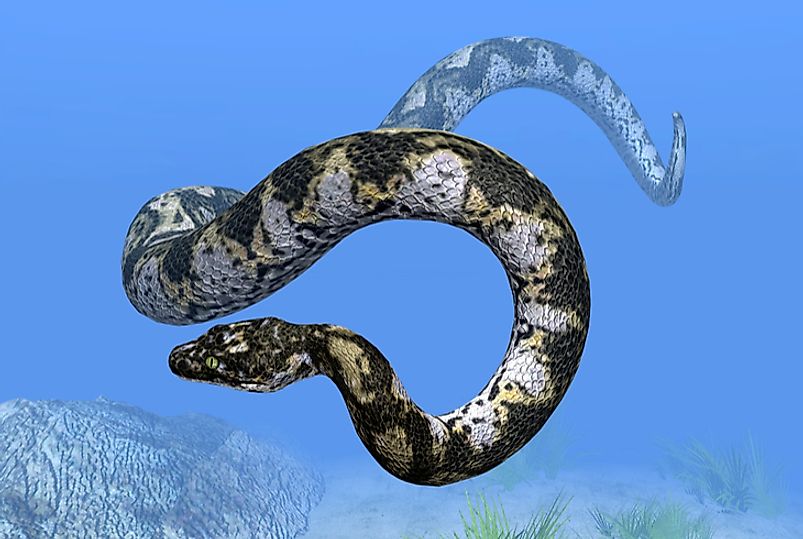Titanoboa Facts: Extinct Animals of the World

Titanoboa was a giant snake that has since become extinct. Measuring at approximately 48 feet, Titanoboa was twice as long as the longest living snake today and almost four times heavier than the giant anaconda. The Titanoboa, whose fossils date back to around 58 to 61 million years ago, existed during the Paleocene period in history. It lived in the jungles of South America. The fossils were discovered in the coal mines of La Guajira, Colombia in 2009. The name Titanoboa was coined from ‘Titanic Boa’. This gigantic snake is the largest ever snake to have been recorded, supplanting the previous record holder, the Gigantophis.
Physical Description
Titanoboa was a large snake that measured around 50 feet. Its weight was between 2300 and 2500 pounds. It had a diameter of about 3 feet at its thickest. This size is almost twice larger than the modern day’s largest snake. They had rows of teeth growing on its upper and lower jaws. The teeth were very small in size and very sharp, an adaptation for its hunting. The snake was dull in color. The color ranged from dull brown to grayish and black. The area in which it lived contributed to the large size.
Habitat and Range
With the disappearance of the dinosaurs, the Titanoboa was among the pioneer plus-sized reptiles to take over the ecological-niche. The emergence of the Titanoboa was accompanied by the emergence of other small and relatively large reptiles.
Titanoboa lived in hot and humid climate. Studies have found out that Titanoboa shared its habitats with the giant turtle carbonemys. They co-existed in the swampy areas of South America. The fossils of Titanoboa have been discovered in South America in Peru and Colombia. During the Paleocene period, these regions had the climate like the tropical regions. In a warmer climate, the cold-blooded reptiles grow into larger sizes compared to cooler climates.
Diet
The Titanoboa was not venomous. It, therefore, killed its prey physically by either constriction or blocking the windpipe and not by the use of venom. Its diet constituted of other reptiles of smaller sizes, birds, and small crocodiles. Its large size made it easier to hunt and constrict its prey. The characteristic dull color of the Titanoboa made it difficult for the prey to notice while approaching.
Behavior
The Titanoboa spent most of its time in the water. Due to its large size, the Titanoboa spent most of its terrestrial times slithering around trees. The large size would have made it difficult for the Titanoboa to climb trees. The snake may have been more dangerous while in water since its weight was helped by the buoyancy of water.
Reproduction
The Titanoboa, just like many other modern reptiles, had mating seasons. Before the mating season, the male and female Titanoboas stayed away from each other. When the mating season was about to begin, the female Titanoboa released a certain hormone to notify the males. The males would then fight each other for the female. The winning male fertilized the eggs. Right after the fertilization, the females would attack the males and sometimes eat them up. They would then get into a resting period, which was also the gestation period. The gestation period took around seven months before the baby Titanoboa slid out of a thin membrane on the sides of their mother’s bodies.
What Caused Its Extinction?
Although no one knows the exact reason why Titanoboa went extinct, two theories have been put forward. Climate change contributed to the disappearance and extinction of most of Titanoboa. The declining global temperatures favored the emergence of smaller snakes. Larger reptiles were slowly erased and smaller snakes and other reptiles too over their places in the ecosystem. The rapid drop in temperatures made the metabolic processes of the Titanoboa difficult. Habitat change also contributed to the extinction of the Titanoboa. Rainforests reduced and paved the way to grasslands. The Titanoboa, therefore, lacked proper habitat. They disappeared and paved way for smaller snakes.











